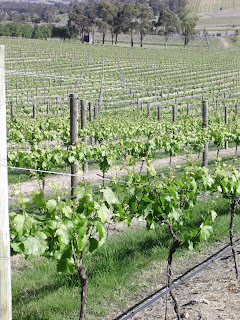 My brain is not naturally an organised space; many of you will be shocked at this frank disclosure.
My brain is not naturally an organised space; many of you will be shocked at this frank disclosure.(That was a joke.)
I could compare the inside of my head to the state of the garden shed on our family farm as I grew up - but that would be unkind to the garden shed.
Perhaps a more realistic comparison would be the buckets of loose odds-and-ends that my dad had lying around his farm workshop. Those of you who've grown up on farms will know exactly what I mean: those containers which seem to collect every imaginable form of plastic and metallic detritis.
Old wire, door lock assemblies, slugged-out bearings, bent nails, odd rivets, a gearknob, dead sparkplugs, bunches of old keys, and squillions of nuts without bolts and bolts without nuts. And that's just the top layer - there's no telling what a few minutes' excavation might turn up!
As a kid I remember raiding these buckets countless times in search of 'the right bits'. A project deemed 'DOA' could be brought back from the brink if the buckets were raided and the required piece/s exhumed. And it was a sweet thing whenever that happened.
The person who manufactured that stainless steel hinge could never have known it would one day be fashioned into just the right replacement part to fit an old fishing reel (see photo). A one-inch piece of aluminium - the fragment of a former life as window frame extrusion - can transcend even its initial purpose when it becomes the glorious centre of a solution.
Nuts and bolts don't always have to be made for each other to become the anatomy of problem-solving: how many times have you seen over-large nuts used to chock up the spare space between the head of a bolt and the surface it's being locking down onto because steel washers simply weren't to hand at the time of crisis?
In some ways, my brain is a little like this.
Pieces of data accumulate. Scraps of conversation. Hard data. Phone numbers. Hunches. Experiences. Philosophy. Why pancakes need buttermilk. Birthdays. (Okay, I lie about the birthdays - I never remember those!)
Occasionally, two or even three of the pieces connect. I'm struggling my way through a problem, desperately in search of a solution, and several pieces seem to come together into something that looks like a good fit. Were the pieces made for each other? Was their origin even in a common stream? Does it matter?
What I love is the sweetness of the moment. That old gearknob actually can become the perfect mate to that orphan chisel without a handle!
For me, some things are just sweet from the outset, the fruit of great design. Like Lie-Nielsen handplanes. Baby.
But design is not static. Even in the life of a single component, design need not be confined to manufacture. Design can occur in the journey, even when the componentry seems to be drawn from different continents. And that is sweet. And it is still design.
Tomorrow I think I'll swing past my dad's toolshed and smile with fresh appreciation at those junk-filled buckets, full of 'sweet spots' waiting to be discovered.
